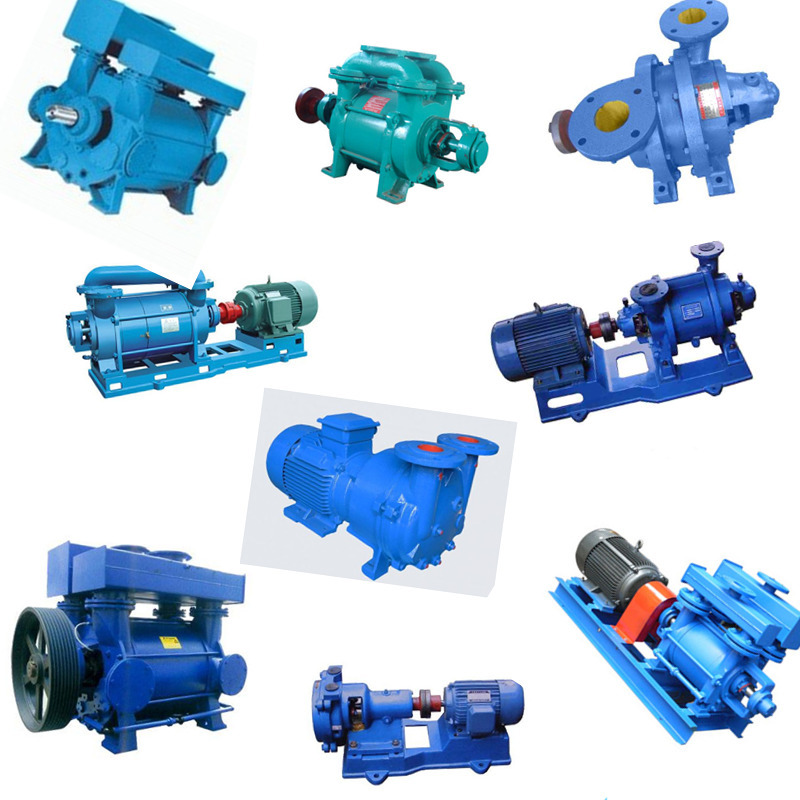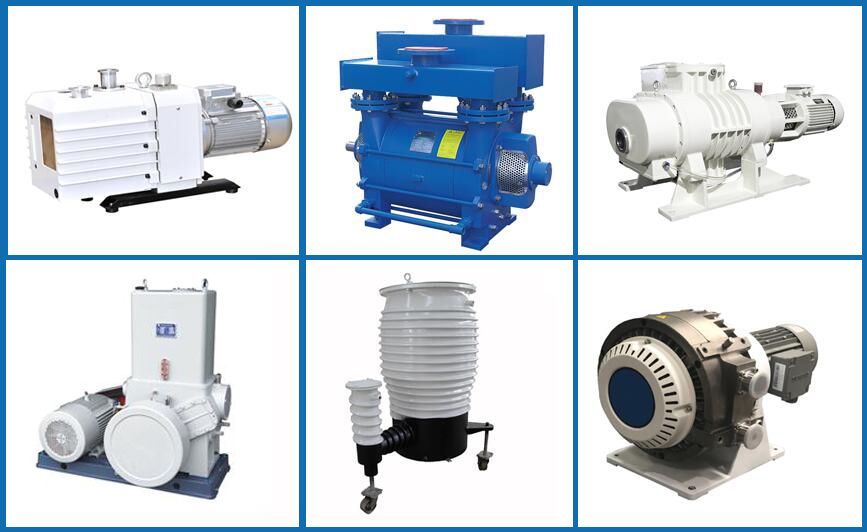What is the use of a vacuum pump
Vacuum pump is a kind of equipment or equipment which can obtain vacuum by mechanical, physical, chemical or physical chemical methods. Following the development of vacuum applications, many varieties have been developed, and their pumping speed has increased from a few minutes per second to hundreds of thousands or millions of liters per second. According to the working principle of vacuum pump, it can be divided into two types, namely, gas transmission pump and gas trapping pump.
With the application of vacuum technology in the field of production and scientific research, the demand for its application pressure scale becomes wider and wider. Most of them need several vacuum pumps to form a vacuum gas extraction system to satisfy the demand of production and scientific research process. Because the vacuum application part touches on a wide range of operating pressure, so any type of liquid ring vacuum pump can not be used. Completely applicable to all operating pressure scale, can only be based on different operating pressure scale and different operating requirements, the use of different types of vacuum pumps. In order to use conveniently and meet the needs of various vacuum technology processes, various vacuum pumps are sometimes combined according to their functional requirements for unit type application.

Vacuum pump function:
1. Limit pressure of vacuum pump: The unit of limit pressure of pump is Pa, which means that the pump is equipped with standard test cover at the inlet and operates under regular conditions, and tends to the lowest stable pressure without introducing normal gas.
2. Vacuum pump pumping rate: the unit of pumping rate is m3/s or l/s. It refers to the ratio of the flow rate of gas flowing through the experimental cover to the equilibrium pressure measured at the specified azimuth of the experimental cover when the pump is equipped with a standard experimental cover and operates under regular conditions. Pump pumping speed for short.
3. Vacuum pump pumping capacity: Vacuum pump pumping capacity unit is Pam3/s or Pal/s. It refers to the gas flow rate at the inlet of the pump.
4. Starting pressure of vacuum pump: The starting pressure unit of vacuum pump is Pa. It refers to the pressure when the pump starts without damage and has the effect of pumping.
5. Pressure of the front stage of the pump: The unit of pressure of the front stage of the vacuum pump is Pa, which refers to the outlet pressure of the vacuum pump whose exhaust pressure is lower than that of an atmospheric pressure.
6. Maximum front-stage pressure of vacuum pump: The maximum front-stage pressure unit of the vacuum pump mouth is Pa, which means that it exceeds the front-stage pressure that can damage the pump.
7. Maximum operating pressure of vacuum pump: The maximum operating pressure unit of vacuum pump is Pa, which refers to the inlet pressure corresponding to the maximum pumping volume. Under this pressure, the pump can work continuously without deterioration or damage.
8. Compression ratio: Compression ratio refers to the ratio of the outlet pressure of a pump to the inlet pressure of a given gas.
9. Ho’s coefficient: the ratio of the actual pumping speed on the area of the pumping passage to the theoretical pumping speed calculated by molecular slurry.
10. Pumping speed coefficient: the ratio of the actual pumping speed of the pump to the theoretical pumping speed calculated by molecular slurry at the inlet of the pump.
11. Reflux rate: The unit of reflux rate of pump is g/cm2.s. It refers to the mass flow rate of the pump flow passing through the unit area of the pump inlet when the pump operates under regular conditions.
12. Water vapor allowance: The allowance unit of water vapor is kg/h. It refers to the mass flow rate of water vapor that can be pumped out by gas-ballast pumps in continuous operation under normal environmental conditions.
13. Maximum allowable steam inlet pressure: The maximum allowable steam inlet pressure unit is Pa. It refers to the maximum inlet pressure of water vapor that can be pumped out by air ballast pumps in continuous operation under normal environmental conditions.

Because the functions of all kinds of vacuum pumps are different, except that they can satisfy the matching point for the container to stop vacuum pumping. Therefore, it is very important to understand the mission of the pump in the vacuum system when choosing the pump. Let’s discuss the effect of the vacuum pump in different applications.
1. Making the Main Pump in the System
The so-called main pump is a vacuum pump that indirectly stops vacuum pumping on the vacuum system being pumped by the container in order to obtain the vacuum required for satisfying the technological requirements.
2. Coarse Pump
Coarse pumping refers to a vacuum pump that can start things by lowering the pressure of the vacuum system from the beginning of atmospheric pressure to another pumping gas system.
3. Front-stage pump
Front-stage pump is a vacuum pump used to maintain the front-stage pressure of another pump below its maximum allowable front-stage pressure.
4. Maintenance pump
Maintenance pumps refer to serious air system pumping very small, can not be useful in the application of important front-stage pumps. To this end, a vacuum pump with a smaller pumping rate is added to the vacuum system to help the front pump maintain the normal operation of the main pump or maintain the high-pressure vacuum pump needed for the idle container.
5. Coarse Vacuum Pump or Low Vacuum Pump
Coarse and low vacuum pumps refer to vacuum pumps in the range of low vacuum or rough vacuum pressure when the pressure of the container is lowered from the beginning of the atmosphere.
6. High Vacuum Pump
High vacuum pump refers to the vacuum pump in the field of high vacuum.
7. Ultra High Vacuum Pump
Ultra-high vacuum pump refers to the vacuum pump in the field of ultra-high vacuum.
8. Booster Pump
Booster pump refers to a vacuum pump that works between a low vacuum pump and a high vacuum pump in order to improve the volume of the pumping gas system in the central pressure range or to lower the pumping speed of the front stage pump.
(The article comes from the Internet. If reprinting is not allowed, please contact our company to delete it.)
